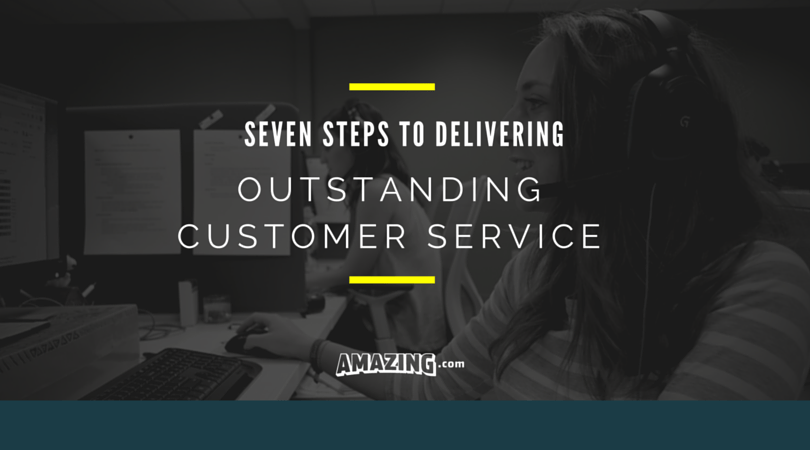7 Steps to Delivering Outstanding Customer Service

Focusing on your source of revenue and ensuring that that source of revenue is as happy as possible is the number one thing you must do when growing any business. In the case of most businesses, that source of revenue is your customer. Distractions happen and priorities shift, but at the end of the day you always need to keep your customers front and center. It?s crucial to understand that excellent customer service is key to building a business–and that anything less can easily destroy it.
Here are seven guidelines that will help you deliver high-quality customer service:
With every communication and action, focus on the future effect and the customer experience.
Do you often find yourself reacting only after a problem has occurred? Don?t wait until the moment you?re on the phone with your customer to think about the customer experience. Think about the customer experience as a long-term goal. What kind of customer service can you offer to convert a one-time customer into a lifetime customer? What customers dislike most are blank responses, late responses, and responses that just make them feel like they’re not a priority. And when customers don?t feel like they?re a priority, they will leave to find someone else who does.
Be proactive, keep it as simple as possible, and start with clear training.
As I?ve previously discussed, you need to be proactive and think long-term. Think about all the possible problems customers can have before they even get their products. I believe that 99% of issues can be resolved by having a simple-to-use product with clear directions. The idea is that you want to prevent your customers from ever needing to look for answers because everything with the product gives them all the training and direction they need.
Make it easy to get answers.
For example, just because you?re selling a product on Amazon doesn?t mean you should let Amazon handle all aspects of customer support for your product. You want to be in control of the conversation. Give your customers a phone number, an email, a website to go to when they need help. Distract the audience from wanting to complain at a source that you do NOT have total control over.
Get personal, engage with your customers.
People want to be engaged with. This is why social media platforms like Facebook, Twitter, and Instagram attract large audiences because they create places where people can engage and communicate. People want to feel like they’re a part of a conversation. It would simply be just a financial transaction if there’s nothing tying them back to the company on a personal level. Let your audience know there are real people behind your product – real people that want to help them, real people that care about them and want them to have a great customer experience.
Listen with empathy and then act.
Be careful with just skimming customer support requests and providing quick responses. Customers don?t appreciate generic responses. Take the time to listen to your customers, read their emails, and fully understand the context of their problems. You need to be empathetic with the situation. Empathy doesn?t mean that you?re always giving into the customer – it just means that you?re listening to the customer, relating to them, and giving them the best response possible.
Fast response time.
Never leave your customers hanging. It doesn’t matter if you’re a small mom-and-pop operation or a giant company like Apple – people expect the same thing: fast response time. A general rule of thumb has been getting an inquiry response within 24 to 48 hours, but a quicker response is a good way to stand out from competition and prove to customers that you value their business. In my opinion, if you are not giving people an 8 hour turnaround time, it’s too long. If 3 days go by and they don’t get a response well what are they going to do? The faster, the better. Don’t be lazy with this!
Track issues closely to keep problems in perspective.
The rule of thumb here is that 80% of company complaints come from 20% of its customers. The last thing you want to do is run around putting out fires because you’re afraid that they are all big issues. You’re never going to have 100% customer satisfaction, so you need to keep things in perspective. Always be working on the things that are top priority for the majority of your audience. Respect and listen to the people that are loud, but keep them in perspective.
This post is dedicated to Ryan Reddick who cared deeply about each and every one of our customers.